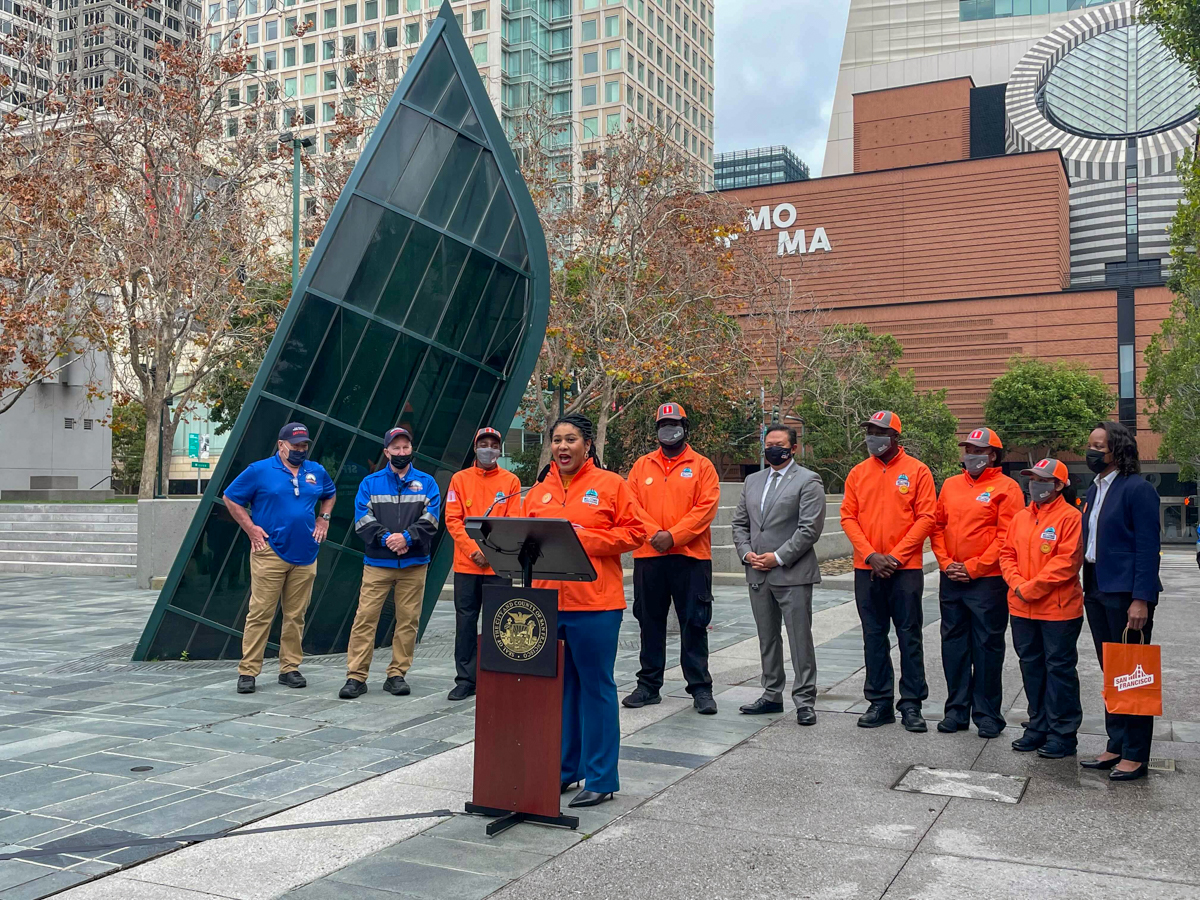Hopeful for a return of conventions, tourism and business meetings, San Francisco is building a presence of “welcome ambassadors” intended to foster a safer and more welcoming environment in the city’s downtown core.
Outfitted in orange jackets, the 50 ambassadors will man downtown BART stations, Market Street, Moscone Center and other high-traffic corridors and act as a helpful presence for visitors, giving directions and recommendations as well as alerting the appropriate city agencies of “questionable or challenging” activity, said Mayor Breed on Tuesday.
“We want people to say, ‘I had a great time in San Francisco; I recommend you visit San Francisco,’” said Breed. “I’m fighting to get all these conventions and activities here.”
The two-year, $12.5 million ambassador program is one of several efforts to encourage more visitors to downtown and other tourist attractions, like Fisherman’s Wharf and Chinatown. Other initiatives include a redeployment of police officers to tourist areas, another downtown ambassador program comprised of retired police officers, and beautification projects in and around Union Square.
Thanks to widespread telecommuting and a sharp drop in tourism, San Francisco’s downtown has remained underpopulated since the onset of the pandemic. Office occupancy is persistently low compared to other metro areas, and the city’s once-roaring convention business has hollowed out. SF Travel, a hospitality trade group, projected just 50,000 convention hotel nights this year compared to 1.2 million in 2019.
Moscone Center, the crown jewel of San Francisco’s conventions business, accounted for a whopping 21% of the city’s $10 billion travel and tourism sector prior to the pandemic. Hotels and visitors generated $500 million in tax revenue for the city in 2018, in addition to about 40,000 jobs and $2.3 billion in wages and benefits, according to Beacon Economics.
City leaders are hoping that picture will improve with a Nov. 8 easing of restrictions on international travel and a gradual return of office workers.
Michele Schneider, a senior vice president at Salesforce, said that the company is opening more floors at its San Francisco offices for in-person workers and “encouraging teams to gather in person when it’s safe,” such as for client meetings, employee trainings and other activities. Salesforce has about 9,000 employees based in San Francisco and is the city’s largest private employer.
Rodney Fong, president of the San Francisco Chamber of Commerce, pointed to the recent easing of indoor mask mandates for vaccinated offices as a “confidence booster” for downtown employers.
“Some are going to wait until January [to bring employees back], but not all,” Fong said.
Starting on Monday, San Francisco began requiring its own workforce of roughly 35,000 to work on-site at government offices. Mayor Breed and other officials hope the city will set an example for private employers to encourage a return to office work.
“We want to be role models for the rest of the economy to come back as well,” said Kate Sofis, director of the Office of Economic and Workforce Development, on Monday. “We’re also a key part of supporting the restaurants and the coffee shops and the nail places and all the other services that have grown up to support office workers and city workers. So for us as city employees, we really want to model that.”
